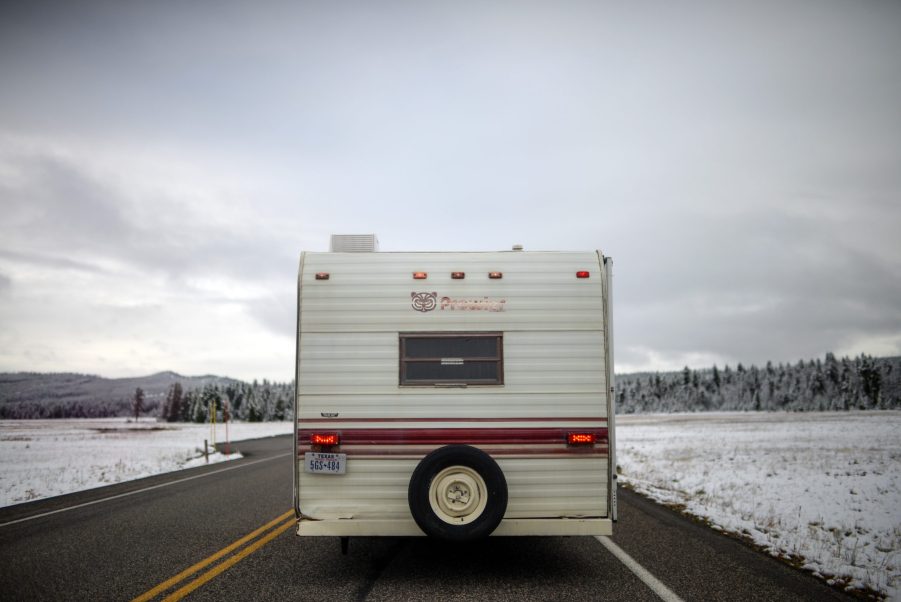
How to Safely Handle Your RV in the Snow
Winter is coming, and it’s bringing tons of ice and snow with it. That means you could find yourself trying to drive your RV in icy conditions during holiday travel. Holiday travel is crowded, dangerous, and cops are paying extra attention during these times. So, learn how to safely maneuver your RV in the snow before you get in over your head.
RV driver tips for the snow
If you’re from the north or mountainous regions, you may be wondering what the big deal is. You’ve driven in snow plenty of times and know all the tips and tricks. However, RVs are different beasts when slippery conditions come into play.
They are larger, longer, and harder to stop than the average vehicle. Also, some options don’t have all-wheel or four-wheel drive. It’s common for recreational vehicles to be rear-wheel drive instead of front-wheel drive, meaning the tactics to avoid slipping are different.

According to RV share, while the weight of an RV makes you feel sturdy, don’t become overconfident. More weight is in the back with a rear-wheel drive vehicle, providing less control and traction. Plus, if you’re hauling a camper and hit the brakes too hard, the extra weight can throw your truck or SUV around.
Prepare your RV for winter
Before taking a vacation to a winter wonderland, make sure your RV is ready for the journey. Upgrade to winter tires. Most rigs come with highway tread or summer tires, which are quiet but don’t have as much gripping power.
Also, protect your RV from the cold. Your RV pipes can freeze. Winterize your RV by wrapping the pipes in heat tape. Or you might be able to find RV-specific antifreeze for potable water systems. Don’t use the regular automotive stuff. Plus, you can always ask a local motorhome specialist for help.
Check on your RV batteries. Cold weather can decrease battery performance, and you don’t want to stall somewhere without access to heat. Before you leave, make sure all of your batteries are charged.
It’s good to stock up for emergencies too. Be sure to have propane in case you need to run your generator for heat. Also, bring waterproof clothes, an extra set of winter clothes, extra water, a first aid kit, and canned food in case you get stranded in a storm.
How to drive an RV in the snow
Use your low beams in snowy conditions. Using your brights will reflect light from the snow into your eyes. This can be a little blinding and cause fatigue. But, if you can, avoid driving at night. Darkness only intensifies the difficulties of driving in snow.
Blue Dog RV suggests turning off the exhaust brake if you have a diesel RV. Otherwise, the backend of your RV could swerve, sending you into a ditch or other vehicles. You would also want to avoid overcorrecting.

You will want to slow down and keep extra distance between yourself and other vehicles. Also, don’t turn too quickly and don’t hit the brakes too hard. You want to do everything a bit slower. Also, you can gently tap the brakes a few times to help slow down.
Don’t take on too much at once. If you feel uncomfortable, stop. Find a rest stop to take a break or stay off the road. Even if you can drive in snow, you don’t know about the people around you. Plus, you can always find experts for more advice to learn how to handle slippery conditions when you’re ready.



